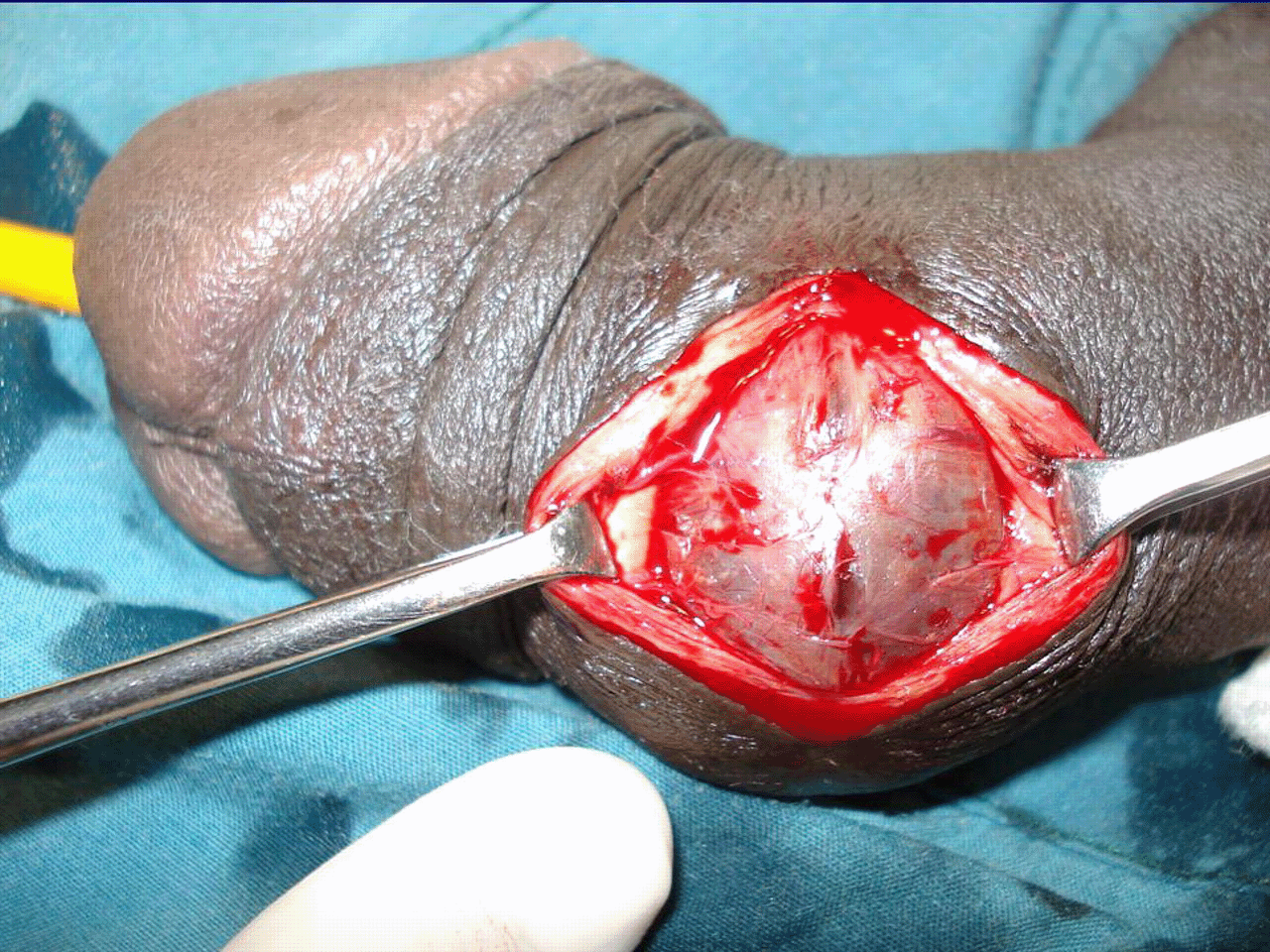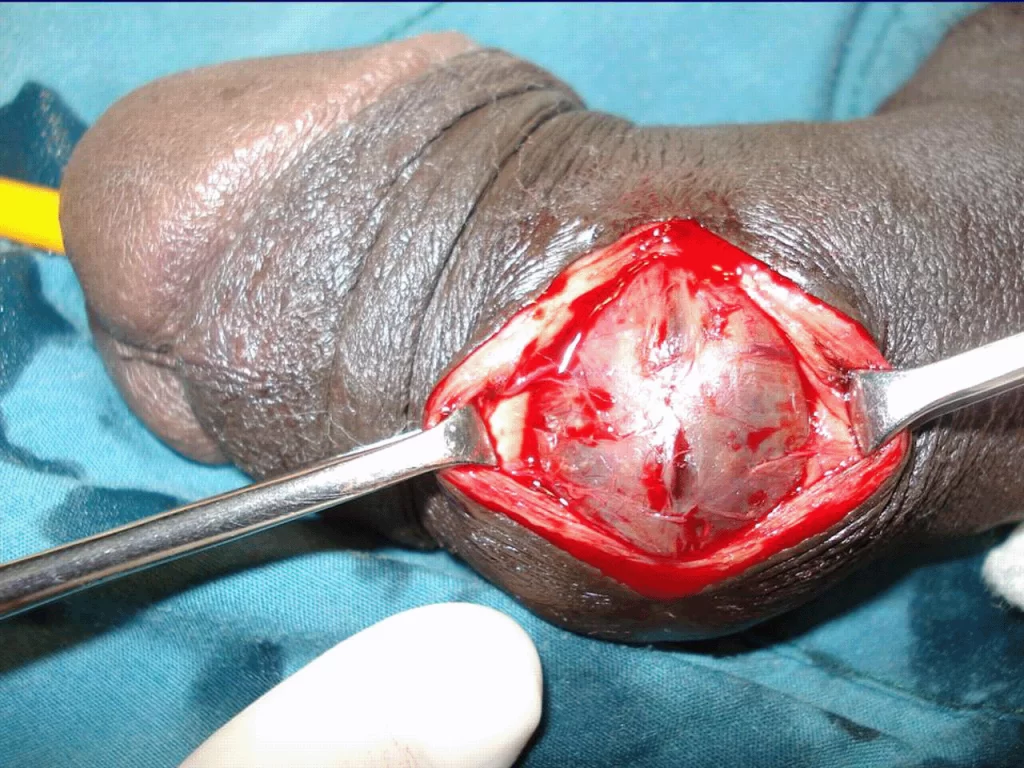
What is Penile Fracture?
A penile fracture, also known as tunica albuginea injury or corporal rupture is not a fracture in the real sense since the penis does not have any bone that could be broken.
Penile fracture is the tear or damage of the tunica albuginea, the sheath tissues underneath your penile skin, and it’s the tissues that are filled up with blood to make an erection.
The tunica albuginea tissue is responsible for the increase in length and girth of your penis when aroused.
When the penis ruptures, the membrane that covers the erectile tissue of the penis is affected, hence, it’s not regarded as a fracture medically but as a penile rupture or penile hernia.
Causes of Corporal rupture or Tunica albuginea
The rupture of the penis can only occur when the penis has gained erection when the erectile tissue is swollen and the membrane is at the risk of rupturing when the penis is bent beyond its limits.
For such a crack or rupture to occur, a strong external force is required. The external force bends the penis so much that the membrane gives way and cracks, and this only happens with wild sexual activity.
Especially if your penis slips out of your woman’s vagina frequently during sexual intercourse, your penile tissues can be damaged.
Rigorous masturbation or penis exercises in an attempt to increase your penis length and girth can also lead to mild penile fracture with little or no pain.
An accident is also an uncommon cause of penile fracture but it does happen.
Signs and Symptoms of Penile Fracture
Common signs and symptoms of corporal rupture are the pain experienced in the penis and the curvature of the penis.
Penile fracture is also characterized by chronic pain, erectile dysfunction (ED), arteriovenous fistulas
If your penis is ruptured, medical attention is required and surgery may be carried out to correct the issue because there may be internal bleeding from the membrane which is the reason for the chronic pain.
This bleeding also leads to the swelling of the limb, which often becomes discolored.
The rupture can also damage your urethra. This manifests in the blood in your urine and it’s a strong reason to visit your doctor immediately to avoid more complications.
Diagnosis and treatment of Erectile Tissue Damage
In the event of a fracture of the penis, a doctor should be consulted, and an ultrasound examination is conducted.
The diagnosis of a fracture of the penis is first clarified by an X-ray examination of the erectile tissue.
However, to be sure of the occurrence of penile fracture, it must be diagnosed with the help of an ultrasound machine
If it is confirmed, an attempt is made to correct the rupture with magnetic resonance imaging and other treatment approaches.
Timely treatment of penis rupture is particularly important to prevent other health issues or permanent curvature of the penis and associated disruption of the erection.
Management of Penile Fracture
A little damage to the penile tissues can heal on its own (but can cause a permanent change to the penis structure) as other tissues are regenerated in the body.
This is often the claim of people that encourage penile exercises to increase your penis length and girth.
However, penile rupture should not be left untreated, and after being placed on treatments, here are other ways to manage the condition until you’re completely healed.
- Pain relief
After being placed on diagnosis and treatment, your doctor will also recommend the right therapy for you.
This depends on the symptoms and the severity of the issue. Antibiotics are used to relieve pain and to also protect the erectile tissue from possible infection.
- Surgery
Whether surgery is necessary for healing or not can only be determined by your doctor.
However, one can say that such a surgical intervention is essential in most cases to prevent consequential damage.
In this case, the corresponding tear in the erectile tissue is stitched and, if necessary, the injury to the urethra is repaired surgically.
After the operation, a bandage is put on the affected person’s penis to fasten recovery and at the same time prevent further swelling.
- Prevent erection
This is particularly important in healing the fracture of the penis. Drugs are often prescribed and used to lower libido and prevent an erection.
Your penis needs no erection since strain on the damaged tissues would lower the healing process or make it impossible.
Also, most doctors advise you to abstain from sexual activities for a few weeks after the surgery.
Conclusion
Erectile tissue damage is becoming common amongst young adults and it’s as a result of the excessive bending of the penis.
Masturbation devices, wild sex, and attempt to increase penile length are all responsible for penile fracture.
It is on this note that you should be careful with anything that can cause damage to your penile tissues, and if you experience pain in your penis or a little curvature, you should consult your doctor for examination.






